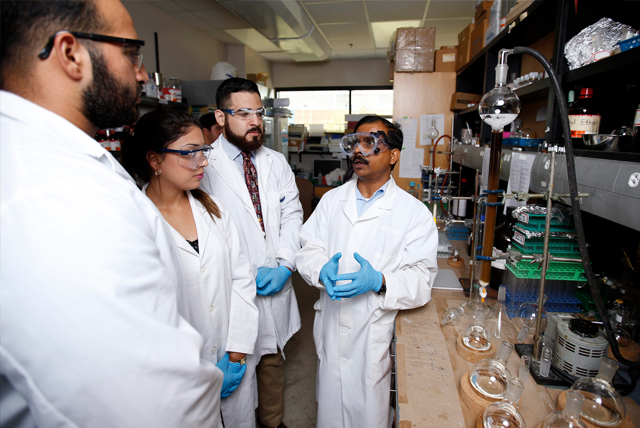Document Type
Article
Publication Date
5-1-2015
Abstract
Conspectus
Electronically photoexcited dynamics are complicated because there are so many different relaxation pathways: fluorescence, phosphorescence, radiationless decay, electon transfer, etc. In practice, to model photoexcited systems is a very difficult enterprise, requiring accurate and very efficient tools in both electronic structure theory and nonadiabatic chemical dynamics. Moreover, these theoretical tools are not traditional tools. On the one hand, the electronic structure tools involve couplings between electonic states (rather than typical single state energies and gradients). On the other hand, the dynamics tools involve propagating nuclei on multiple potential energy surfaces (rather than the usual ground state dynamics).
In this Account, we review recent developments in electronic structure theory as directly applicable for modeling photoexcited systems. In particular, we focus on how one may evaluate the couplings between two different electronic states. These couplings come in two flavors. If we order states energetically, the resulting adiabatic states are coupled via derivative couplings. Derivative couplings capture how electronic wave functions change as a function of nuclear geometry and can usually be calculated with straightforward tools from analytic gradient theory. One nuance arises, however, in the context of time-dependent density functional theory (TD-DFT): how do we evaluate derivative couplings between TD-DFT excited states (which are tricky, because no wave function is available)? This conundrum was recently solved, and we review the solution below. We also discuss the solution to a second, pesky problem of origin dependence, whereby the derivative couplings do not (strictly) satisfy translation variance, which can lead to a lack of momentum conservation.
Apart from adiabatic states, if we order states according to their electronic character, the resulting diabatic states are coupled via electronic or diabatic couplings. The couplings between diabatic states |ΞA⟩ and |ΞB⟩ are just the simple matrix elements, ⟨ΞA|H|ΞB⟩. A difficulty arises, however, because constructing exactly diabatic states is formally impossible and constructing quasi-diabatic states is not unique. To that end, we review recent advances in localized diabatization, which is one approach for generating adiabatic-to-diabatic (ATD) transformations. We also highlight outstanding questions in the arena of diabatization, especially how to generate multiple globally stable diabatic surfaces.
Recommended Citation
Subotnik, J. E.; Alguire, E. C.; Ou, Q.; Landry, B. R.; Fatehi, S. The requisite electronic structure theory to describe photoexcited nonadiabatic dynamics: nonadiabatic derivative couplings and diabatic electronic couplings. Acc. Chem. Res. 2015, 48 (5), 1340– 50, DOI: 10.1021/acs.accounts.5b00026
DOI
10.1021/acs.accounts.5b00026



Comments
This document is the unedited Author’s version of a Submitted Work that was subsequently accepted for publication in Accounts of Chemical Research, copyright © American Chemical Society after peer review. To access the final edited and published work see http://pubs.acs.org/articlesonrequest/AOR-JaNxiGBvAr9TeFzjKbfk.